Our Products
Moving treatment
forward
We work closely with individuals impacted by rare disease, caregivers, healthcare professionals, and academic and industry partners to help ensure our products deliver value to people living with rare diseases. We apply a deliberate and careful approach to the production and commercialization of all our unique products and services.
From research to production, we are committed to making a difference and reducing the impact of rare diseases on patients and families.



For the updated versions of the Summary of Product Characteristics (SmPC) and the Patient Information Leaflet (PIL), please refer to the EMA (European Medicines Agency) website.
In accordance with the current legislation, we are unable to provide any information about our drugs concerning health issues. Anyone requiring these details should contact their treating physician.



For the updated versions of the Summary of Product Characteristics (SmPC) and the Patient Information Leaflet (PIL), please refer to the EMA (European Medicines Agency) website.
In accordance with the current legislation, we are unable to provide any information about our drugs concerning health issues. Anyone requiring these details should contact their treating physician.



For the updated versions of the Summary of Product Characteristics (SmPC) and the Patient Information Leaflet (PIL), please refer to the EMA (European Medicines Agency) website.
In accordance with the current legislation, we are unable to provide any information about our drugs concerning health issues. Anyone requiring these details should contact their treating physician.



For the updated versions of the Summary of Product Characteristics (SmPC) and the Patient Information Leaflet (PIL), please refer to the EMA (European Medicines Agency) website.
In accordance with the current legislation, we are unable to provide any information about our drugs concerning health issues. Anyone requiring these details should contact their treating physician.



For the updated versions of the Summary of Product Characteristics (SmPC) and the Patient Information Leaflet (PIL), please refer to the EMA (European Medicines Agency) website.
In accordance with the current legislation, we are unable to provide any information about our drugs concerning health issues. Anyone requiring these details should contact their treating physician.



For the updated versions of the Summary of Product Characteristics (SmPC) and the Patient Information Leaflet (PIL), please refer to the EMA (European Medicines Agency) website.
In accordance with the current legislation, we are unable to provide any information about our drugs concerning health issues. Anyone requiring these details should contact their treating physician.



For the updated versions of the Summary of Product Characteristics (SmPC) and the Patient Information Leaflet (PIL), please refer to the EMA (European Medicines Agency) website.
In accordance with the current legislation, we are unable to provide any information about our drugs concerning health issues. Anyone requiring these details should contact their treating physician.



For the updated versions of the Summary of Product Characteristics (SmPC) and the Patient Information Leaflet (PIL), please refer to the EMA (European Medicines Agency) website.
In accordance with the current legislation, we are unable to provide any information about our drugs concerning health issues. Anyone requiring these details should contact their treating physician.



FILSUVEZ topical gel is indicated for the treatment of wounds associated with dystrophic and junctional epidermolysis bullosa in adult and pediatric patients 6 months of age and older.
It is not known if FILSUVEZ is safe and effective in children younger than 6 months of age.
Important Safety Information
What is the most important safety information I should know?
FILSUVEZ may cause a serious side effect of allergic reactions.
Allergic reactions and skin reactions to FILSUVEZ may include the following symptoms: red itchy bumps (hives), skin rash, redness or itching. If you get any of these symptoms, stop using FILSUVEZ right away and call your healthcare provider.
What are the possible side effects of FILSUVEZ?
The most common side effect of FILSUVEZ is application site reactions, such as pain and itchy skin.
Call your doctor for medical advice about side effects. You may report side effects to FDA at 1-800-FDA-1088.
How should I take FILSUVEZ?
See the detailed “Instructions for Use” that comes with FILSUVEZ for information on how to apply FILSUVEZ.
Use FILSUVEZ exactly as your healthcare provider tells you to use it.
The tube of FILSUVEZ is for one-time use only. After the tube has been opened, apply the gel right away. Throw away any remaining gel and the tube after use.
Do not use around or get FILSUVEZ in the eyes, or mucous membrane areas, examples are mouth, vagina or anus.
If you get FILSUVEZ in your eyes or mucous membrane area, rinse with clean water right away. Contact your healthcare provider if you have any discomfort.
If the wounds you are treating with FILSUVEZ become infected, stop treatment and contact your healthcare provider. Signs or symptoms of infection may include the wound becoming red, warm, swollen, painful or drains yellow or greenish fluid (pus).
Please see Full Prescribing Information and Patient Information for Filsuvez.
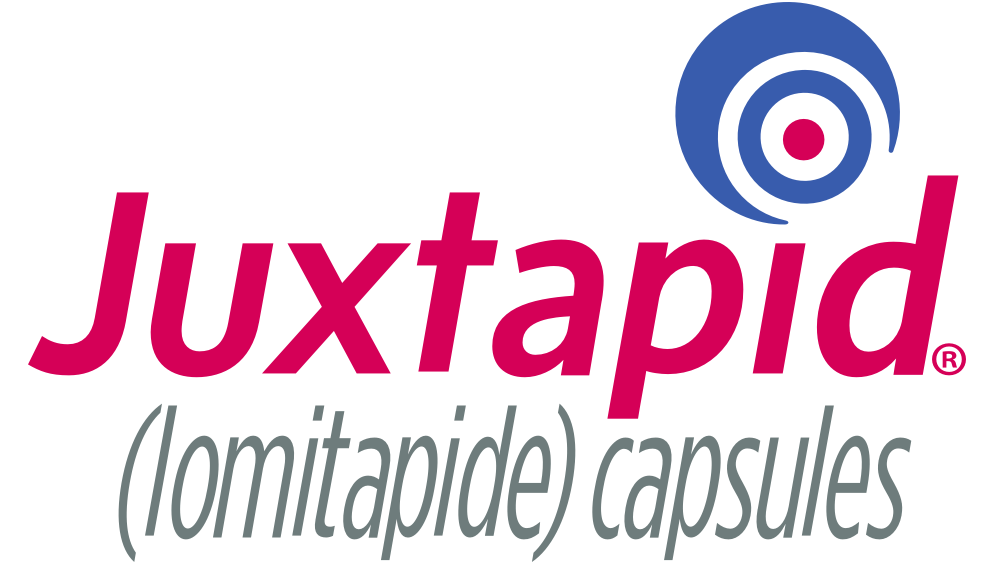


Juxtapid is a prescription medicine used along with diet and other lipid-lowering treatments, including low-density lipoprotein (LDL) apheresis where available, in adults with homozygous familial hypercholesterolemia (HoFH) to reduce LDL (“bad”) cholesterol, total cholesterol, a protein that carries bad cholesterol in the blood (apolipoprotein B), and non-high-density lipoprotein cholesterol (non-HDL-C).
Studies have not been conducted to tell us whether Juxtapid can help prevent problems from high cholesterol, such as heart attack, stroke, death, or other health problems. Studies have also not been conducted to tell us whether Juxtapid is safe for use in people with high cholesterol who do not have HoFH, including those with heterozygous familial hypercholesterolemia (HeFH).
Important Safety Information
Juxtapid is only available through a restricted program called the Juxtapid Risk Evaluation and Mitigation Strategy (REMS) Program. Your doctor must be enrolled and certified in the program in order to prescribe Juxtapid.
Juxtapid may cause serious side effects, including:
Liver Problems
- Juxtapid can cause liver problems such as increased liver enzymes or increased fat in the liver. For this reason, your doctor should do blood tests to check your liver before you start Juxtapid and while you are taking Juxtapid (especially if your dose is increased). If your tests show signs of liver problems, your doctor may lower your dose of Juxtapid or stop it altogether.
- You should tell your doctor if you have had liver problems in the past, including liver problems while taking other medicines.
- Stomach problems can also be a symptom of liver problems. Tell your doctor right away if you have nausea; vomiting or stomach pain that gets worse, does not go away, or changes; fever; yellowing of your eyes or skin; feeling more tired than usual; or having flu-like symptoms while taking Juxtapid because these may be signs of liver problems.
- Do not drink more than 1 alcoholic drink per day while taking Juxtapid.
Harm to your unborn baby:
- Do not take Juxtapid if you are pregnant, think you may be pregnant, or are planning to become pregnant.
- You should have a negative pregnancy test result before you can start on Juxtapid. Use effective birth control while taking Juxtapid. If you become pregnant while taking Juxtapid, stop taking Juxtapid and call your doctor right away.
You should not take Juxtapid if you:
- Are taking medications known as moderate or strong CYP3A4 inhibitors (for example, certain medications used to treat bacterial, fungal, or viral infections, as well as certain medications used to treat depression, high blood pressure, or angina). These medications may affect how your body breaks down Juxtapid.
- Have moderate to severe liver problems or active liver disease, including abnormal liver function tests.
Other possible side effects of Juxtapid:
- The most common side effects of Juxtapid are stomach problems including diarrhea, nausea, vomiting, cramps/pain, indigestion, and/or gas. You may be able to reduce your chance of stomach problems by following an eating plan consisting of less than 20% of calories from fat.
- Juxtapid makes it harder for some fat-soluble nutrients, such as vitamin E and fatty acids, to get into your body. Take supplements that contain fat-soluble vitamins each day while you take Juxtapid. Ask your doctor, nurse, or dietitian how to take them.
Tell your doctor if you have any side effect that bothers you or that does not go away. Stop taking Juxtapid and tell your doctor if you have severe diarrhea, especially if you also have lightheadedness, decreased urine output, or tiredness. These are not all the possible side effects of Juxtapid. For more information, speak with your doctor or pharmacist.
Tell your doctor about all the medicines you take, including prescription and non-prescription medicines, vitamins, and herbal supplements. Juxtapid may affect the way other medicines work, and other medicines may affect how Juxtapid works.
You are encouraged to report negative side effects of prescription drugs to the FDA. Visit www.FDA.gov/medwatch or call 1-800-FDA-1088.
This is the most important information about Juxtapid. For more detailed information, please see the Medication Guide and full Prescribing Information including Box Warning.
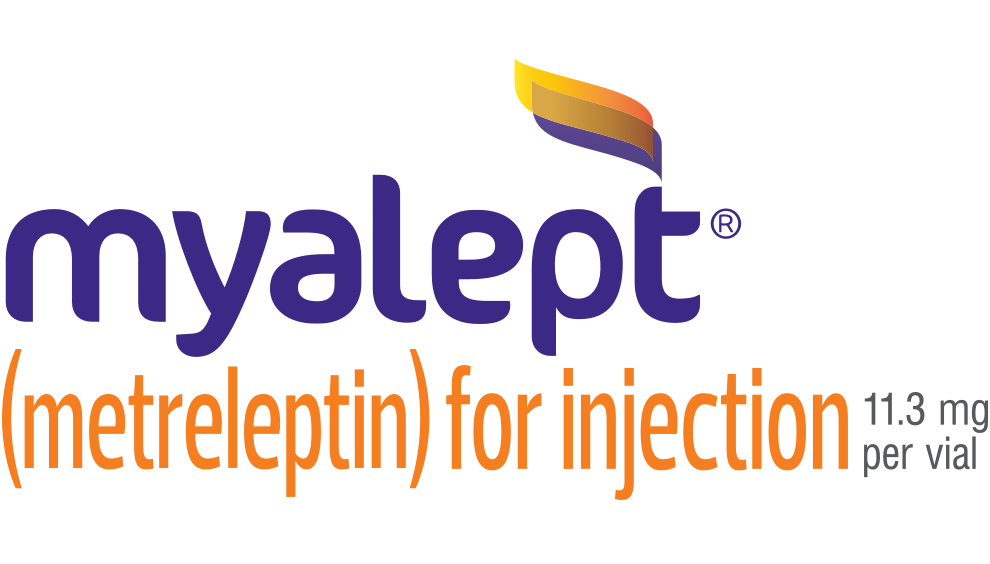


Myalept® (metreleptin) is a leptin replacement therapy used with a doctor-recommended diet to treat problems caused by not having enough leptin (leptin deficiency) in people with generalized lipodystrophy.
- It is not known if Myalept is safe and effective when used to treat problems (complications) caused by partial lipodystrophy or to treat liver disease, including non-alcoholic steatohepatitis (NASH).
- Myalept should not be used to treat people with HIV-related lipodystrophy or people with metabolic disease, including diabetes mellitus and hypertriglyceridemia, without signs or symptoms of congenital or acquired generalized lipodystrophy.
Important Safety Information
Myalept is only available through a restricted program called the Myalept Risk Evaluation and Mitigation Strategy (REMS) Program. Your doctor must be enrolled and certified in the program in order to prescribe Myalept.
Myalept may cause serious side effects, including:
- risk for developing certain proteins called neutralizing antibodies that may reduce how well your own leptin or Myalept works. Side effects of these antibodies may include infection, problems with blood sugar (including diabetes), or an increase in triglycerides.
- increased risk of a type of blood cancer called lymphoma.
You should not take Myalept if you:
- have general obesity not caused by a congenital leptin deficiency.
- are allergic to metreleptin or any of the ingredients in Myalept. Symptoms of an allergic reaction include rash, itching (hives), swelling of face, lips, tongue, or throat, problems breathing or swallowing, fainting or dizziness, rapid heartbeat.
Before using Myalept, tell your doctor if you have any medical conditions including if you:
- have or have had problems with your blood cells, including low blood cell counts (especially your white blood cells), bone marrow, immune system, pancreas, swollen lymph nodes, lymphoma, high blood triglyceride levels, or use insulin or a sulfonylurea.
- are pregnant or plan to become pregnant as it is unknown if Myalept will harm your unborn baby. If you become pregnant while using Myalept, talk to your healthcare provider about registering with a program to collect information about the outcomes of moms and babies exposed to Myalept during pregnancy. You can enroll in the Myalept program by calling
1-855-669-2537. - are nursing or plan to nurse. You should not nurse while you take Myalept.
Other possible side effects
The most common side effects of Myalept include headache, low blood sugar, decreased weight, and/or abdominal pain.
You may get low blood sugar (hypoglycemia) if you take Myalept with other medicines used to lower blood sugar, such as insulin or sulfonylurea. Your doses of these medications may need to be lowered while you use Myalept. Tell your doctor right away if you experience shakiness, sweating, headache, drowsiness, weakness, dizziness, confusion, irritability, hunger, fast heartbeat, or a jittery feeling because these may be signs of low blood sugar (hypoglycemia).
For newborns and infants, mix Myalept with sterile water for injection (preservative-free) (WFI). Serious side effects including death have happened in newborns or infants who have received the preservative benzyl alcohol. Bacteriostatic water for injection contains benzyl alcohol and it should not be used to mix Myalept for newborns and infants.
Myalept may worsen symptoms caused by certain problems in your immune system (autoimmune disorder). Ask your doctor about what symptoms you should watch for that may require further testing.
Talk to your doctor about any side effect that bothers you or that does not go away. These are not all the possible side effects of Myalept. For more information, speak to your doctor or pharmacist. Tell your doctor about all the medications you take, including prescription and nonprescription medicines, vitamins, and herbal supplements. Take Myalept exactly as your doctor instructs you.
You are encouraged to report negative side effects of prescription drugs to the FDA. Visit www.FDA.gov/medwatch or call 1-800-FDA-1088.
This is the most important information about Myalept. For more detailed information, please see the patient Medication Guide and full Prescribing Information including Boxed Warning.
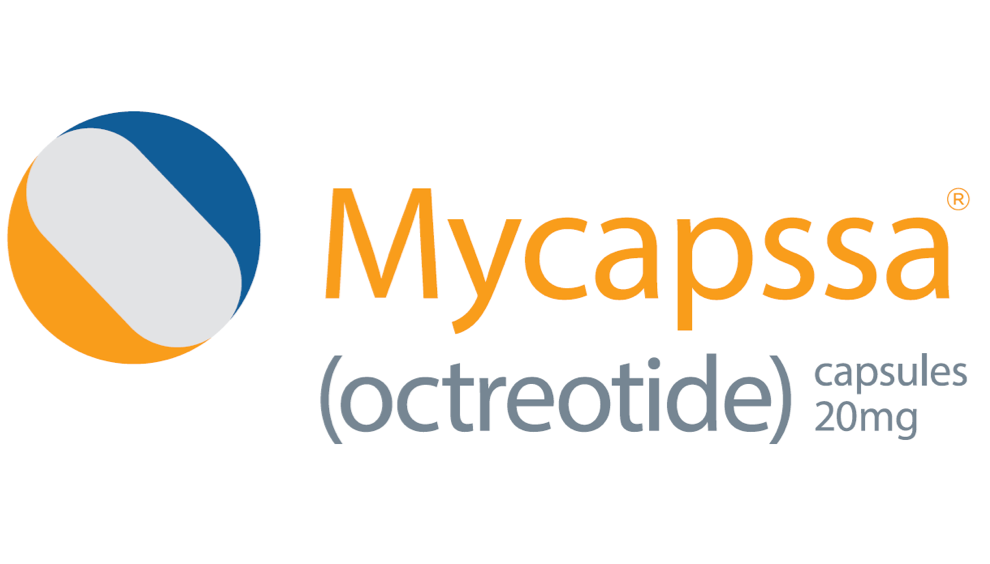

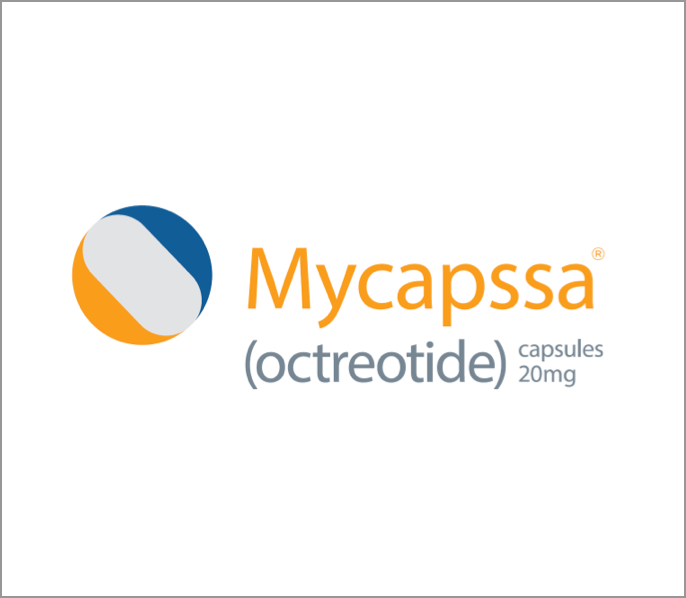
MYCAPSSA (octreotide) is an oral prescription medicine used in the long-term maintenance treatment of acromegaly in people for whom initial treatment with octreotide or lanreotide has been effective and tolerated.
If these treatments are effective and your body is tolerating it, you may be eligible to take MYCAPSSA instead of the injections. Ask your doctor if this oral treatment is appropriate for you.
Important Safety Information
MYCAPSSA can cause problems with the gallbladder. Tell your healthcare provider if you have any of these symptoms: sudden pain in your upper right stomach (abdomen) or right shoulder or between your shoulder blades; yellowing of your skin or the whites of your eyes; fever with chills; or nausea.
MYCAPSSA may affect your blood sugar, thyroid hormone, or vitamin B12 levels. Tell your healthcare provider if you have any problems or conditions related to these. Your healthcare provider may monitor these levels during your treatment with MYCAPSSA.
Tell your healthcare provider if you have an irregular heartbeat.
MYCAPSSA may cause your body to have issues with absorbing dietary fats. Tell your healthcare provider if you have any new or worsening symptoms including fatty stools or stools with an oily appearance, changes in the color of your stools, loose stools, stomach (abdominal) bloating or weight loss.
Who should not use MYCAPSSA?
MYCAPSSA can cause a serious allergic reaction including anaphylactic shock. Stop taking MYCAPSSA right away and get emergency help if you have any of these symptoms: swelling of your tongue, throat, lips, eyes or face; trouble swallowing or breathing; severe itching of the skin with rash or raised bumps; feeling faint; chest pain; or rapid heartbeat.
Do not use MYCAPSSA if you are allergic to octreotide or any other ingredients in MYCAPSSA. If you need to know the ingredients, ask your healthcare provider or pharmacist.
If you have certain other medical conditions, you should use MYCAPSSA with caution. Tell your healthcare provider about all your medical conditions, especially the following: pregnancy or breastfeeding; liver disease; kidney disease; or difficulty in emptying bladder completely.
Women taking an oral contraceptive should use an alternative non-hormonal method of contraception or a back-up method when taking MYCAPSSA. Tell your healthcare provider about all the medicines you take. MYCAPSSA may affect the way other medicines work, and other medicines may affect how MYCAPSSA works.
What are the possible side effects of MYCAPSSA?
The most common side effects are headache, joint pain, nausea, weakness, diarrhea, and sweating a lot.
You are encouraged to report negative side effects to Chiesi Farmaceutici S.p.A. at 1-888-661-9260 or FDA at 1-800-FDA-1088 or www.fda.gov/medwatch.
Keep MYCAPSSA and all medicines out of the reach of children.
How should I take MYCAPSSA?
Do not take MYCAPSSA with food. MYCAPSSA should be taken with a glass of water on an empty stomach. Take MYCAPSSA at least 1 hour before a meal or at least 2 hours after a meal (for example, you could take your morning dose 1 hour before breakfast and your evening dose at bedtime).
Please see Full Prescribing Information , Including Medication Guide.



Elfabrio® (pegunigalsidase alfa-iwxj) is a prescription infusion medicine used to treat adults with confirmed Fabry disease.
Important Safety Information
Severe allergic reactions (hypersensitivity reactions), including anaphylaxis, may occur during and after Elfabrio treatment. If severe allergic reactions or anaphylaxis occurs during treatment, your healthcare provider will immediately stop the infusion and provide appropriate medical care. If these reactions should occur after treatment, seek immediate medical care.
What should I know about Elfabrio infusions?
Your healthcare provider may give you other medications prior to your Elfabrio infusions to help manage allergic reactions and infusion-related side effects. They will explain how to recognize the signs and symptoms of these allergic reactions and infusion-related side effects. If these signs and symptoms occur, it’s important for you to seek immediate medical care. If the reaction is mild to moderate, your healthcare provider may choose to slow the infusion rate or withhold the dose.
In clinical trials, 41 patients (29%) experienced an infusion-related side effect. The most common signs and symptoms of an infusion-related reaction with Elfabrio were hypersensitivity, nausea, chills, itchy skin, rash, chest pain, dizziness, vomiting, feelings of weakness, pain, sneezing, shortness of breath, nasal congestion, throat irritation, abdominal pain, skin redness, diarrhea, burning sensation, nerve pain, headache, tingling or numbness, shaking movements, agitation, increased body temperature, flushing, slow heart rate, muscle pain, high blood pressure, and low blood pressure.
Your healthcare provider will do blood and urine tests to check your kidney function during treatment with Elfabrio.
The most common side effects of Elfabrio include infusion-related side effects, common cold, headache, diarrhea, fatigue, nausea, back pain, pain in the limbs, and sinus infection.
Please see Full Prescribing Information for Elfabrio.
You are encouraged to report negative side effects of prescription drugs to the FDA. Visit www.fda.gov/medwatch or call 1-800-FDA-1088.



Lamzede® (velmanase alfa-tycv) is intended for the treatment of non-central nervous system symptoms of alpha-mannosidosis in adult and pediatric patients.
Important Safety Information
Severe allergic reactions (hypersensitivity reactions) including anaphylaxis, may occur during and after Lamzede treatment. If severe allergic reactions or anaphylaxis occur during treatment, your healthcare provider will immediately stop the infusion and provide appropriate medical care. If these reactions should occur after treatment, seek immediate medical care.
What should I know about infusions?
Your healthcare provider may give you other medications prior to your next infusion to help manage allergic reactions and infusion-related side effects. They will explain how to recognize the signs and symptoms of these allergic reactions and infusion-related side effects. If these signs and symptoms occur, it’s important for you to seek immediate medical care.
What are the common signs and symptoms of an allergic reaction or infusion-related side effects with Lamzede?
In clinical trials, some patients experienced signs and symptoms of an allergic reaction, which included bluish skin discoloration, low blood pressure, vomiting, hives, skin redness, facial swelling, fever, and involuntary movements.
In clinical trials, when patients experienced an infusion-related side effect, the most common signs were fever, chills, skin redness, vomiting, cough, itching, rash, and pink eye.
Are there certain people who should or should not take Lamzede?
Lamzede may cause harm to your unborn baby. For females who are able to become pregnant, your healthcare provider should do a pregnancy test before you start treatment with Lamzede. Tell your healthcare provider right away if you become pregnant or think you may be pregnant. You should use effective birth control during treatment with Lamzede and for at least 14 days after the last dose.
What are the most common side effects of Lamzede?
Lamzede can cause side effects including severe allergic reactions and anaphylaxis, common cold, fever, headache, and joint pain or stiffness.
Indication
Lamzede® (velmanase alfa-tycv) is intended for the treatment of non-central nervous system symptoms of alpha-mannosidosis in adult and pediatric patients.
Please see Full Prescribing Information for Lamzede.
You are encouraged to report negative side effects of prescription drugs to the FDA. Visit www.fda.gov/medwatch or call 1-800-FDA-1088.



Ferriprox® (deferiprone) is a prescription medicine used to treat iron overload from blood transfusions in people with:1
- thalassemia syndromes
- sickle cell disease or other anemias
Ferriprox Tablets are for adults and children ≥8 years of age; Ferriprox Oral Solution is for patients ≥3 years of age.
It is not known if Ferriprox is safe and effective to treat iron overload due to blood transfusions:
- in people with myelodysplastic syndrome or Diamond Blackfan anemia
- in children less than 3 years of age
Important Safety Information
Ferriprox can cause serious side effects, including a very low white blood cell count. One type of white blood cell that is important for fighting infections is called a neutrophil. If your neutrophil count is low (neutropenia), you may be at risk of developing a serious infection that can lead to death. Neutropenia is common with Ferriprox and can become severe in some people. Severe neutropenia is known as agranulocytosis. If you develop agranulocytosis, you will be at risk of developing serious infections that can lead to death.
Your healthcare provider will do a blood test before you start Ferriprox and regularly during treatment to check your neutrophil count. If you develop neutropenia, your healthcare provider should check your blood counts every day until your white blood cell count improves. Your healthcare provider may temporarily stop treatment with Ferriprox if you develop neutropenia or infection.
Stop taking Ferriprox and call your healthcare provider or get medical help right away if you develop any of these symptoms of infection: fever, sore throat or mouth sores, flu-like symptoms, or chills and severe shaking.
It is important for you to have your white blood cell count checked within 24 hours of developing symptoms of an infection to see if you have severe neutropenia (agranulocytosis). Do not delay getting medical care if you are unable to reach your healthcare provider.
Do not take Ferriprox if you are allergic to deferiprone or any of the ingredients in Ferriprox.
Before you take Ferriprox, tell your healthcare provider about all of your medical conditions, including if you: have liver problems, are pregnant or plan to become pregnant. Ferriprox can harm your unborn baby. You should avoid becoming pregnant during treatment with Ferriprox. Tell your healthcare provider right away if you become pregnant or think you may be pregnant during treatment with Ferriprox. For females who are able to become pregnant, your healthcare provider should do a pregnancy test before you start treatment with Ferriprox. You should use effective birth control during treatment with Ferriprox and for at least 6 months after the last dose. For males with female partners who are able to become pregnant, you should use effective birth control during treatment with Ferriprox and for at least 3 months after the last dose. Talk to your doctor if you are breastfeeding or plan to breastfeed. It is not known if Ferriprox passes into your breast milk. Do not breastfeed during treatment with Ferriprox and for at least 2 weeks after the last dose.
Tell your healthcare provider about all the medicines you take, including prescription and over-the-counter medicines, vitamins and herbal supplements.
Avoid drinking alcohol during treatment with Ferriprox tablets (2 times a day). This may cause a faster release of the medicine.
What are other possible side effects of Ferriprox?
Ferriprox can cause serious side effects, including increased liver enzyme levels in your blood. Your healthcare provider should do blood tests to check your liver function before you start and then monthly during treatment with Ferriprox. Your healthcare provider may temporarily stop treatment with Ferriprox tablets if you develop increased liver enzyme levels and they continue to be increased.
Ferriprox can cause decreased levels of zinc in your blood. Your healthcare provider will do blood tests to check your zinc levels before you start and during treatment with Ferriprox and may prescribe a zinc supplement for you if your zinc levels are low.
The most common side effects of Ferriprox in people with thalassemia include nausea, vomiting, stomach-area (abdominal) pain, joint pain, abnormal liver function tests and low white blood cells.
The most common side effects of Ferriprox in people with sickle cell disease or other anemias include fever, stomach-area (abdominal) pain, bone pain, headache, vomiting, pain in arms or legs, sickle cell anemia with crisis, back pain, abnormal liver function tests, joint pain, mouth and throat pain, common cold, low white blood cells, cough and nausea.
Ferriprox may cause a change in urine color to reddish-brown. This is not harmful and is expected during treatment with Ferriprox.
You are encouraged to report negative side effects of prescription drugs to the FDA. Visit www.fda.gov/medwatch or call 1-800-FDA-1088.
Please see Full Prescribing Information, including boxed WARNING, and Medication Guide.


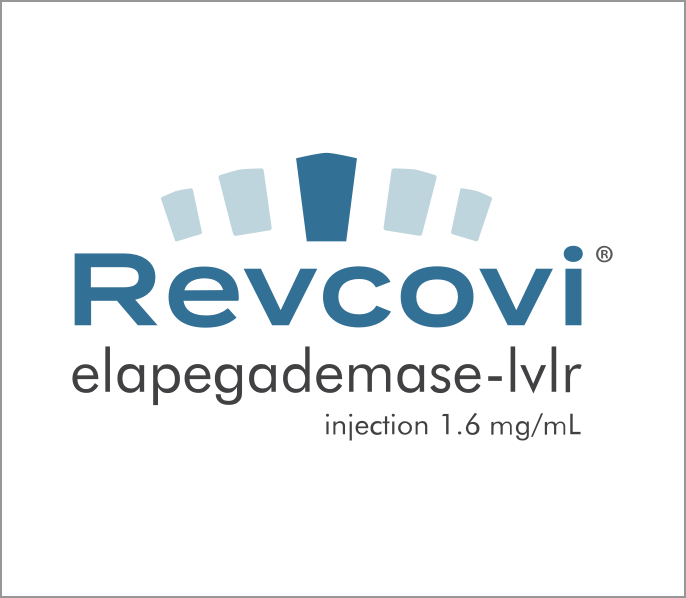
Revcovi® (elapegademase-lvlr) is indicated for the treatment of adenosine deaminase severe combined immune deficiency (ADA-SCID) in pediatric and adult patients.
Important Safety Information
Warnings and Precautions:
- If you have lower than normal platelet counts, you may be at increased risk of bleeding at the injection site. Your doctor should not prescribe Revcovi if you have severely low blood platelet counts.
- There may be a delay in improvement of your immune system’s function after starting Revcovi treatment. During this delay, it is important to be protected from exposure to infections until your immune system improves.
What are the possible side effects of Revcovi?
- Cough and vomiting were the most common side effects reported by patients receiving Revcovi.
- Based on reports of side effects of other enzyme replacement therapies used to treat ADA-SCID, which are similar to Revcovi, patients taking Revcovi may also experience:
- blood and blood cell–related problems: red blood cells being destroyed faster than they can be made, resulting in anemia; and higher or lower than normal number of platelets in the blood
- skin-related problems: redness and itching at the injection site
- cancers of the immune system called lymphomas
What types of monitoring will be needed while I am taking Revcovi?
- Continuous therapy and adherence to the recommended drug schedule is important for the success of the treatment.
- While you are being treated with Revcovi, your doctor will need to do blood tests to monitor the levels of ADA activity and metabolites and overall immune function.
- This monitoring will ensure you are maintaining appropriate levels for therapeutic benefit. If an ongoing decline in your blood’s measured adenosine deaminase (ADA) activity occurs, your immune function and clinical status will be monitored closely and precautions will be taken to help reduce your risk of infection.
What is known about taking Revcovi during pregnancy?
- If you are pregnant or planning to become pregnant, or breastfeeding or planning to breastfeed, please talk to your doctor.
You are encouraged to report negative side effects of prescription drugs to the FDA. Visit www.fda.gov/medwatch or call 1-800-FDA-1088.
Please see the Full Prescribing Information.
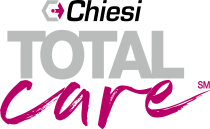


Help eligible patients with rare disease find the support they need with the Chiesi Total Care Program.
US only
Full terms and conditions can found at Chiesitotalcare.com
Learn More about Chiesi Global Rare Diseases
For
Patients
Find support, advocacy, and what we value most—trusting caring partnerships.
See
Pipeline
Explore rare disease therapies under development.
See
Pipeline
Explore novel therapies under development.
About
Us
Learn more about who we are and why we care about improving the lives of people with rare diseases.
For Healthcare
Professionals
From research to results, see how we’re committed to helping you help your patients.
